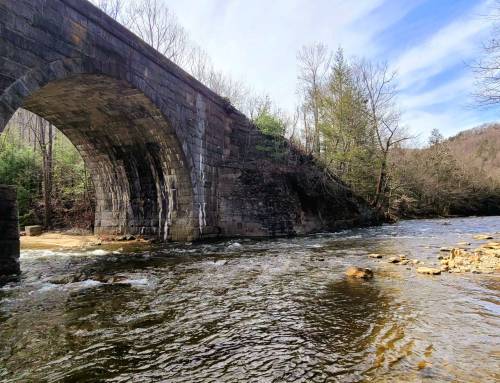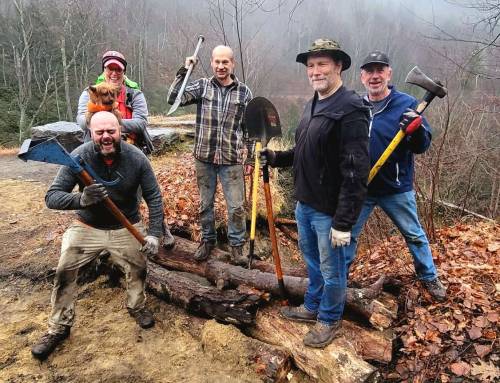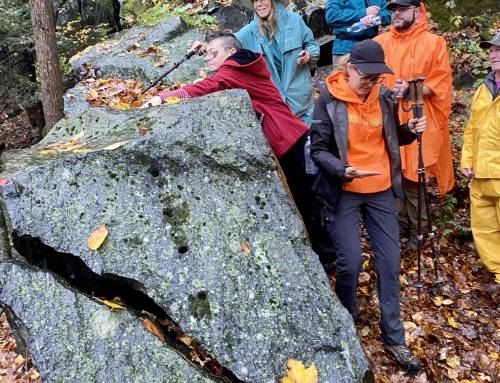
Artist Colony that once was

Courtesy of West Branch Aerial Photography https://wbaerialphotography.com/


Soon to be National Monument in Western Massachusetts. Many folks I run into have no idea this amazing place exists right in their State. Over the years I have brought many people here to discover this beautiful place, and they return, over and over, with friends and family. Check out the 1841 Keystone Arch Bridges Trail website here. The Arches were named to the’1000 Great Places in MA’ visitor’s bureau list.
Out of 12,000 nominations. Directions: Parking is in the lot at the top of Hebert Cross Road at the Walnut Hill Conservation Area off Middlefield Road (off Route 20) in Chester. Please note parking is very limited.This trail would not exist without the efforts of many community organizations. Much of the trail maintenance is done by volunteers. The Friends of the Keystone Arches was formed to coordinate efforts in this direction. Donations for the work are accepted and appreciated. Please help us keep this amazing place open to all. Friends of the Keystone Arches P.0. Box 276
Huntington, MA 01050

Gator Bridge







Trail Map
Keystone Arches: Whistler’s Masterpiece
By Thom Smith, Special to Berkshires Week
Thursday September 9, 2010
CHESTER — When we think of the famous artist known widely as Whistler, his mother comes into the picture — as in “Arrangement in Gray and Black No. 1: Portrait of the Artist’s Mother,” more popularly known by its colloquial name, “Whistler’s Mother.” George Washington Whistler, his father, remains somewhat obscure. But he plays a prominent role in this exploration, as architect and engineer of the Keystone Bridges bringing the Western Railroad through Chester and Middlefield into Becket and the Berkshires.
The bridges, built between 1839 and 1840, rise 60 to 70 feet and span the West Branch of the Westfield River and tributaries. The tracks needed to be as level and straight as possible, and the bridges that accomplished this became known as “Whistler’s masterpiece.”
If you go there, listen for the echoes of the nearly 1,000 immigrants from Ireland, Italy and Russia who arrived in 1838 to build the 10 original stone structures, working for less than a dollar a day. Much of their legacy remains, although little about their living and working conditions can be condoned. They were mostly married men, and their shanties were crude — built of construction remnants with roofs of shakes trimmed from railroad ties.
Five remain of the first stone railroad bridges in the United States. Three were washed away in 1927 and two removed by the railroad. The first stone bridge we come to is still in use by the CSX Railroad and is the only double arch located here. Historically it is the second along the line, as the first was washed away by the flood of 1927.
At the first parking area, besides the double keystone arch, a small but attractive cascade flows down a gentle hill toward the West Branch. A second parking area is located before a steel grate bridge, and the road deteriorates after that.
Blue blazes mark the way, and the visitor can easily spend an afternoon of light walking (and some visitors with four-wheel drive vehicles have been known to lessen the time between the keystone arches).
Look for the kiosk well into your journey. It will point out much that we might otherwise overlook. Caution: The bridges you encounter are without fencing, so do not stand along the rim.
If well-conditioned for climbing very steep inclines, do not refuse the opportunity to climb down to the river for a view — and photo opportunity — of the bridge above. One that I happened upon has ropes to assist. As in visiting any new trail system, stop and study any available information.
In his Hikes and Walks in the Berkshire Hills, Third Edition, Lauren R. Stevens writes, “A great idea for the adventuresome would be to carry an inner tube on the way in and to float out.”
To that I would add, provided the river is high enough.
I have never visited the area when a CSX freight train did not pass along adjacent tracks. Views of the river and the mountains from the trail and the bridges are often striking, and if the visit coincides with fall foliage, it becomes a spectacular blending of the past with the present.
Keystone or arch bridges were built before the days of iron and steel were discovered to be suitable materials and date back to at least the Romans who built them through much of Europe with many still standing. On a recent visit to England we encountered them throughout the country. The Berkshires have more of them than I first imagined, and I have found examples in Pittsfield, Cheshire, Dalton, Adams, Becket and Leeds.
Friends of the Keystone Arches, Inc. is the non-profit, volunteer organization that has taken the mantle of building awareness of the Keystone Arch Bridges, these strangely forgotten monuments that are such an integral part of the first mountain railroad. With the wilds around the Keystone Arches and the untamed Westfield River, as a workplace, Friends strives to maintain the Keystone Arch Bridges (KAB) Trail, as well as a website, Facebook page and a number of other initiatives over the past 25 years. The Westfield River Wild & Scenic Committee is a ready and frequent partner in the ongoing work.
Please visit www.KeystoneArches.com for more information or search our blog “Keystone Arch”

Keystone Bridge “A”

KAB Map with Directions


























